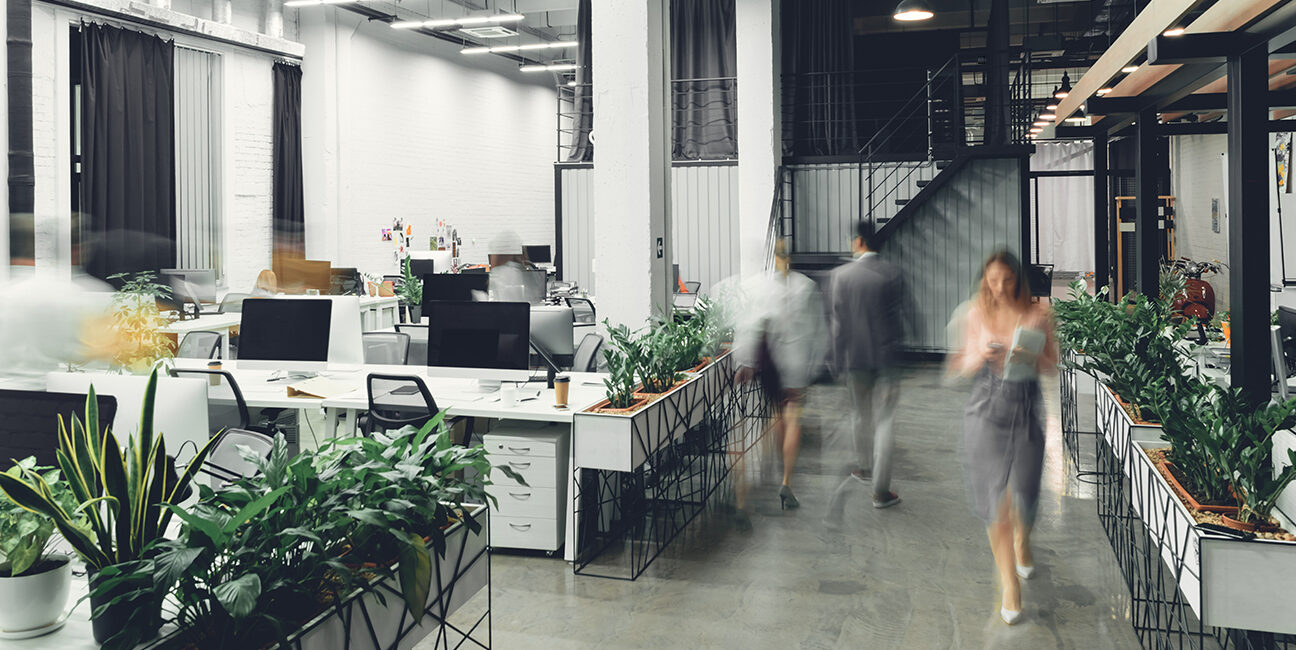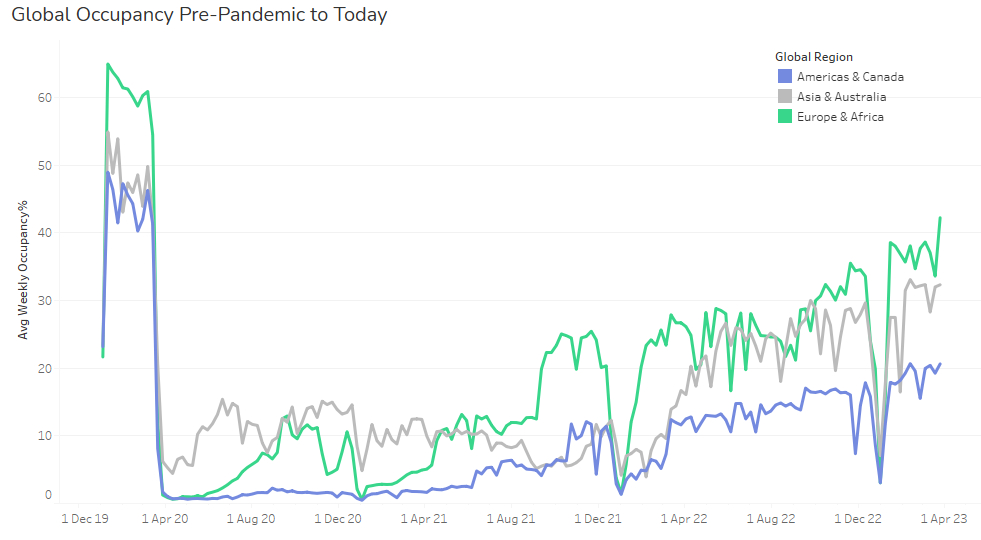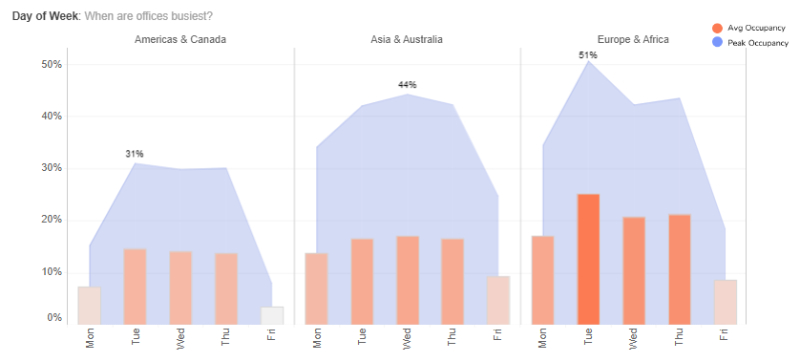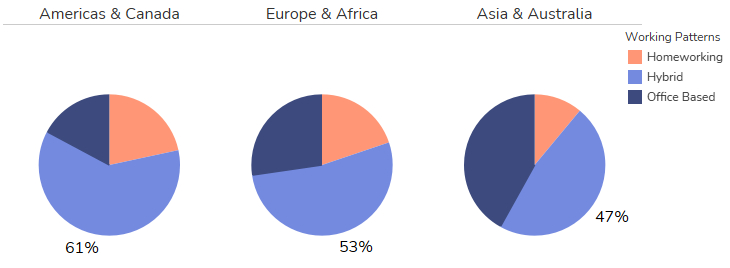

It’s been three long years since the COVID-19 pandemic first began to affect our daily lives. From lockdowns to working from home, we’ve all had to adjust to a new way of living and working. As we look back on those early days of the pandemic, it’s striking to see just how much has changed.

In mid-March 2020, most countries around the world went into lockdown, causing workplace utilisation to plummet. But now, in 2023, according to the latest Freespace Index report, we are seeing the highest global utilisation averages since the pandemic began.
However, the utilisation levels are still below pre-pandemic levels, and there is a wide range of utilisation and occupancy across buildings and regions. This is because organisations are still grappling with getting people back to the office, with differing levels of success.
Timeline
The timeline reflects the evolving nature of the COVID-19 pandemic and its impact on the workplace. Let’s explore each year in more depth.
2020 – Trapped in the Pandemic

The year 2020 was when the pandemic first hit, and the world was thrown into disarray. Countries around the world went into lockdown, with millions of people working from home to help slow the spread of the virus.
During this year, the primary focus was on implementing safe returns to work policies and social distancing measures. The highest occupancy for the year reached 18% in mid-September of those working in-office.
As such, workplace design and utilisation took a backseat. However, as the year progressed, it became apparent that the pandemic was not going away anytime soon as the 2nd wave hit in November/December requiring a global lockdown again.
And businesses had to start planning for the long haul.
2021 – Living with COVID/Dealing with the Variants

The year 2021 was a year of transition, where organisations began to adapt to the new normal of living with COVID. While the pandemic was still raging, vaccinations were rolling out, and new variants were emerging.
Businesses had to continue to navigate the complexities of operating during a pandemic while balancing the needs of their employees and customers. Only 47% of offices show occupancy above 10% across a week.
During the year, hybrid working became more common, with many businesses adopting a flexible approach to where and how their employees worked.
Just before Omicron set foot causing the final global lockdowns, the global occupancy reached 24% in November 2021. As such, organisations had to continue the focus on creating safe and flexible workplaces to support their employees.
2022 – Emerging from the Pandemic

The year 2022 was when the world started to emerge from the worst of the pandemic. Vaccination rates were high, and the number of cases was decreasing.
Significantly, by the end of the year, we saw that 77% of offices had returned to the workplace and global occupancy reached 28% by mid-December but it was still not back to pre-pandemic levels.
During this year, organisations focused on policies and strategies to encourage people back into the office.
According to the CBRE 2022 report, every organisation started taking a different approach toward their goals like optimising the portfolio, improving space data accuracy to identify cost reduction, measuring return-to-office solutions, and implementing employee experience technologies.
2023 – New Ways of Working

In 2023, we anticipate a complete transition to new ways of working. With the pandemic still a threat, businesses will continue to prioritise flexibility and agility in their workplaces.
Currently, we are seeing a mix of working patterns across the globe, but Tuesdays to Thursdays are the most popular days for employees to be in the office. However, there are slight variations in different regions, such as the APAC region showing higher occupancy on Mondays.
Despite this, all regions experience a significant decline in occupancy on Fridays. Interestingly, some offices exhibit exceptionally high levels of activity, with peak occupancy exceeding 80%. This is in contrast to the average Freespace Index for March, which stands at 34%.

When it comes to employee preferences for working in the office, there are notable differences across the globe.
Generally, most regions prefer a hybrid work style. However, the APAC region has proportionally more employees working in the office, while EMEA regions have approximately 30% of employees working in the office.
Conversely, in the Americas, only 17% of employees work exclusively in the office, while 22% work remotely or from home.

As we continue to navigate the changing landscape of work, businesses must remain data-driven and agile in their decision-making.
By using insights into workplace utilisation and employee needs, businesses can optimise their portfolios, design more flexible workplaces, and provide employees with productive and engaging experiences in the workplace.
Hence, the shift has changed from dealing with the immediate effects of the pandemic to accepting that hybrid is the new way of working. So, the focus is now on planning and adapting workplaces (and policies) to ensure people get the most from their experience in the workplace.
What’s New?
Real estate leads and FM service owners are increasingly turning to data to drive decisions in workplace design and optimisation, ensuring cost reduction across the real estate portfolio and within services provided, all the while realising the opportunities and bringing innovation.
- Optimising the workplace design and services involves a holistic approach that takes into account factors such as ergonomic furniture, access to natural light, amenities that promote mental and physical wellness, as well as a sense of community and belonging within the workplace.
- To optimise the portfolio and reduce financial risk to the organisation, workplace design needs to be more flexible, enabling connection and collaboration. Providing solutions that ensure people have worthwhile and productive experiences in the workplace is crucial. It’s not just about the physical space; it’s about how people use that space to work, connect and collaborate.
- Continually monitoring services and workplace design to remain flexible and quickly adapt to future changes in ways of working and demands from the people and organisation is key. It’s important to remember that the pandemic has shown us that we need to be able to pivot quickly in response to changing circumstances.
Thus, the past three years have been challenging, but they have also brought about significant change.
As we continue to navigate the pandemic and its aftermath, we must focus on designing workplaces that are: flexible, innovative, centered around the needs of the people who use them. By using data to drive decisions, we can optimise our portfolios, reduce financial risk, and create workplaces that enable connection and collaboration.
The future of work is hybrid, and we must be ready to adapt to the changing needs of our organizations and people. Get in touch with us today.


